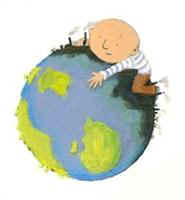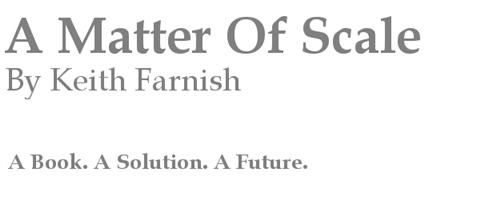

  |
Contents
To get the most out of this book, the
first time you read A Matter Of Scale it is very important that you read it in
chapter order. Once you have read it through once, then it can be used as a
reference book.
Part One: The Scale Of The Problem
Life
on Earth exists on a vast continuum, with individual organisms ranging from the
sub-microscopic to those, which are truly colossal. Each organism functions as
part of a complex web of interconnected ecosystems, some of which are global in
extent. Humans are very effective agents of destruction, having demonstrated the
ability to demolish habitats, pollute ecosystems and change the global climate.
This section of the book shows how humans are affecting key organisms across the
whole range of scales – including viruses, bacteria, nematodes, bees, fish and
boreal forests – and how, consequently, this is adversely affecting human
life.
Chapter 1: One Ten Millionth Of A Metre
Chapter 2: One Millionth Of A Metre
Chapter 3: One Thousandth Of A Metre
Chapter 4: One Hundredth Of A Metre
Chapter 5: One Metre
Chapter 6: One Hundred Metres
Chapter 7: Beneath And Beyond
Part Two: Why It Matters
Humans,
like all other life forms on this planet, act in order to benefit the
continuation of their genes. Humans, unlike all other life forms on this planet,
have managed to go beyond what seems possible for such an insignificant species.
Our attitude to ourselves and our environment is no longer about survival, it
has become selfish. However,
selfish behaviour is not sustainable; within a limited catchment area like the
Earth, selfish behaviour will be self-defeating. This section describes all of
these aspects of human life, and then explains why, even with our ability to
suppress natural instincts, what ultimately matters is what matters to us.
Chapter 8: What Are We?
Chapter 9: Who Are We?
Chapter 10: Why Does It Matter?
Part Three: Making The Connection
Despite
our knowledge of the imminent collapse of the global ecology, and despite the
desire to ensure our continued survival, humans seem incapable of connecting
these two inseparable factors. This part describes first, in theory, how the two
factors are connected and why this connection is so critical to our survival; and then, in practical terms, how humans can allow
themselves to make the connection. The final chapter in this section explains
why humans have become manifestly incapable of making the connection, and thus
acting for good, because of the economic, socio-religious and political systems
that infect every part of our lives - the Tools of Disconnection.
Chapter 11: Why Connect?
Chapter 12: How To Connect
Chapter 13: Why Can’t We Connect?
Part Four: How To Survive
The
only acceptable outcome for humanity is one in which humans reduce their impact
on the planet, such that they are able to continue to remain part of the global
ecosystem. The other option is self-annihilation. Humans have a choice, but in
order to make this choice they must reject and remove the systems that are preventing them
from choosing the outcome. This section describes, at a range of levels never
assembled before in one place, how humans can break down those systems, leaving
us free to choose our destiny – one that will give the Earth, and us, a
future.
Chapter 14: Getting Angry
Chapter 15: You Are The System
Chapter 16: Making The Change
Chapter 17: Being Ourselves
Appendices: Links to related articles